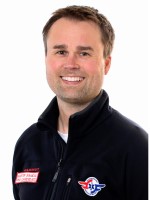Click here to stream the public defence
Due to copyright issues, an electronic copy of the thesis must be ordered from the faculty. For the faculty to have time to process the order, the order must be received by the faculty at the latest 2 days before the public defence. Orders received later than 2 days before the defence will not be processed. After the public defence, please address any inquiries regarding the thesis to the candidate.
Trial Lecture – time and place
See Trial Lecture.
Adjudication committee
- First opponent: Professor Per Örtenwall, Sahlgrenska University Hospital, Sweden
- Second opponent: Professor Jon-Kenneth Heltne, University of Bergen
- Third member and chair of the evaluation committee: Professor II Cecilie Røe, University of Oslo
Chair of the Defence
Professor Emeritus Ulf Erik Kongsgaard, University of Oslo
Principal Supervisor
Senior Consultant Mårten Sandberg, Oslo University Hospital
Summary
Severe accidents and injuries carry vast human suffering and huge financial burdens to the society. One goal of the emergency medical services (EMS) in trauma care is to reduce the associated morbidity and mortality to a minimum.
The aim of this thesis was to explore the utilisation of physician-staffed EMS (P-EMS) in selected aspects of trauma care in south-east Norway, to identify areas for improvement. Special focus was put on rescue work and major incidents, as both evidenced-based practice and literature in this area are limited.
Norwegian P-EMS consist of helicopter emergency medical services (HEMS), search and rescue (SAR) helicopters, and rapid response cars. Anaesthetists are the medically responsible physicians. Both HEMS and SAR have human external cargo capacity which refers to the static rope (long-line) transfer or hoisting of patients.
Dispatch accuracy of P-EMS remains suboptimal. The estimated range of overtriage was 74-80%, while the range of undertriage was 20-32%. Imprecise criteria for dispatch are widely used by the emergency medical coordination centres.
The epidemiological and medical aspects of SAR hoist rescue and HEMS static rope rescue operations are similar. Lack of guidelines for selection between HEMS and SAR in the event of time-critical rescue operations combined with different coordinating entities, can delay dispatch.
Major incidents are uncommon. HEMS and SAR have central roles in incident logistics, clinical leadership, triage assessments and treatment of the victims. Major incident management plans should include both HEMS and SAR more specifically.
In general, prehospital data is inconsistent and inaccurate. The amount of missing data is substantial, and the lack of standardisation remains a barrier to high-quality analyses.
These findings point out several and important system specific shortcomings to the EMS system. Remedial actions could possibly enhance the quality of trauma care and accordingly increase patient safety.
Additional information
Contact the research support staff.
